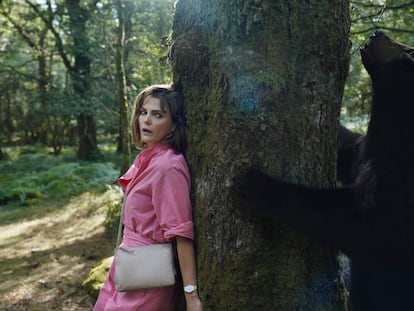In Romania, hundreds dance in bear skins for festive ‘dancing bear festival’
Hundreds of people of all ages, clad in bear costumes, dance every year around Christmas to the deafening beat of drums and roam villages and towns
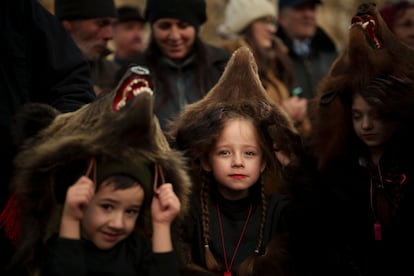
Centuries ago, people in what is now northeastern Romania donned bear skins and danced to fend off evil spirits. That custom is today known as the Dancing Bears Festival, drawing crowds of tourists every December.
Hundreds of people of all ages, clad in bear costumes, dance every year around Christmas to the deafening beat of drums and roam villages and towns. The highlight of this year’s festival falls on Dec. 30, with bear-clad dancers descending on the town of Comanesti, in eastern Romania, for the finale.
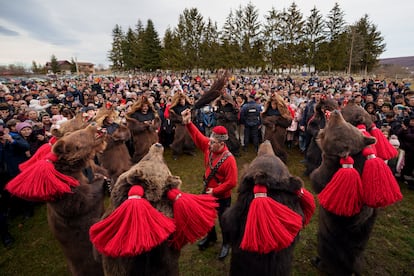
Visitors come from as far as Japan to see the spectacle, featuring lines of people in costumes with gaping bear jaws and claws marching and dancing. Giant red pompom decorations are usually added to the furs. Some of the “bears” jokingly growl or pretend to attack the spectators.
Locals say the custom dates back to the pre-Christianity era, when people believed that wild animals staved off misfortune or danger. Dancing “bears” visited people’s homes and knocked on their doors to wish them good luck and a Happy New Year.
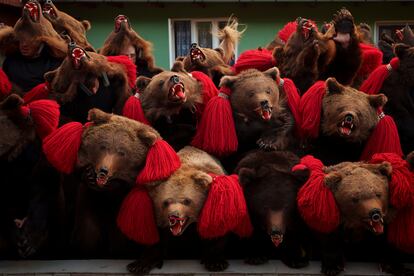
“The bear runs through our veins, it is the spirit animal for those in our area,” said Costel Dascalu, who started taking part in the festival when he was 8. At the time, Romania was still under communist rule and the festival was relatively low-key.
“I want to keep the tradition alive,” the 46-year-old added. When the holiday season approaches, he joked, “our breath smells like bears, and we get goose bumps when we hear the sound of drums.”
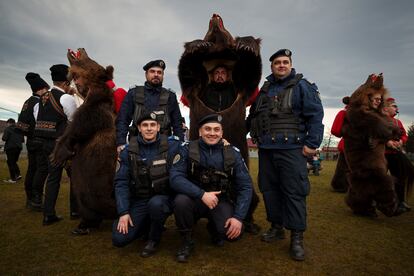
Residents are happy that the tradition has lived on after many Romanians left the region in the 1990s to look for better jobs in Western Europe.
Brown bears are widely present in Romania’s traditions and culture, and the animals can often be seen by mountain roads and in forests. Excessive bear hunting prompted the authorities to issue a ban in 2016.
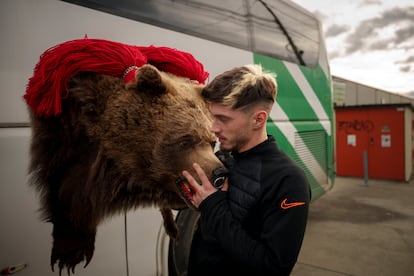
Participants in the festival say most of the bear skins they use as costumes have been preserved for generations and treated with great care.
Wearing a full-sized bear fur isn’t easy: Including the head and claws, the costume could weigh up to 50 kilograms (110 pounds). The most expensive bear skins can cost some 2,000 euros ($2,200), according to local media.
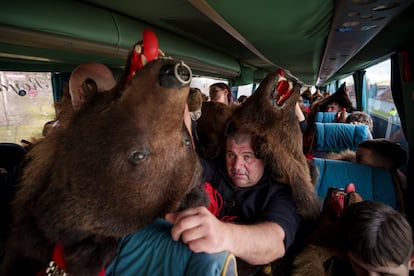
Sign up for our weekly newsletter to get more English-language news coverage from EL PAÍS USA Edition
Tu suscripción se está usando en otro dispositivo
¿Quieres añadir otro usuario a tu suscripción?
Si continúas leyendo en este dispositivo, no se podrá leer en el otro.
FlechaTu suscripción se está usando en otro dispositivo y solo puedes acceder a EL PAÍS desde un dispositivo a la vez.
Si quieres compartir tu cuenta, cambia tu suscripción a la modalidad Premium, así podrás añadir otro usuario. Cada uno accederá con su propia cuenta de email, lo que os permitirá personalizar vuestra experiencia en EL PAÍS.
¿Tienes una suscripción de empresa? Accede aquí para contratar más cuentas.
En el caso de no saber quién está usando tu cuenta, te recomendamos cambiar tu contraseña aquí.
Si decides continuar compartiendo tu cuenta, este mensaje se mostrará en tu dispositivo y en el de la otra persona que está usando tu cuenta de forma indefinida, afectando a tu experiencia de lectura. Puedes consultar aquí los términos y condiciones de la suscripción digital.
More information
Últimas noticias
Aquilino Gonell, former Capitol sergeant: ‘If it hadn’t been for the police, the US would be a dictatorship’
A hybrid building: Soccer pitch, housing, and a shopping mall
Europe urges Trump to respect Greenland following annexation threats
Science seeks keys to human longevity in the genetic mixing of Brazilian supercentenarians
Most viewed
- Alain Aspect, Nobel laureate in physics: ‘Einstein was so smart that he would have had to recognize quantum entanglement’
- Mexico’s missing people crisis casts a shadow over World Cup venue
- Why oil has been at the center of Venezuela-US conflicts for decades
- Alvin Hellerstein, a 92-year-old judge appointed by Bill Clinton, to preside over Maduro’s trial in New York
- Cuba confirms death of 32 of its citizens in the US attack against Venezuela

